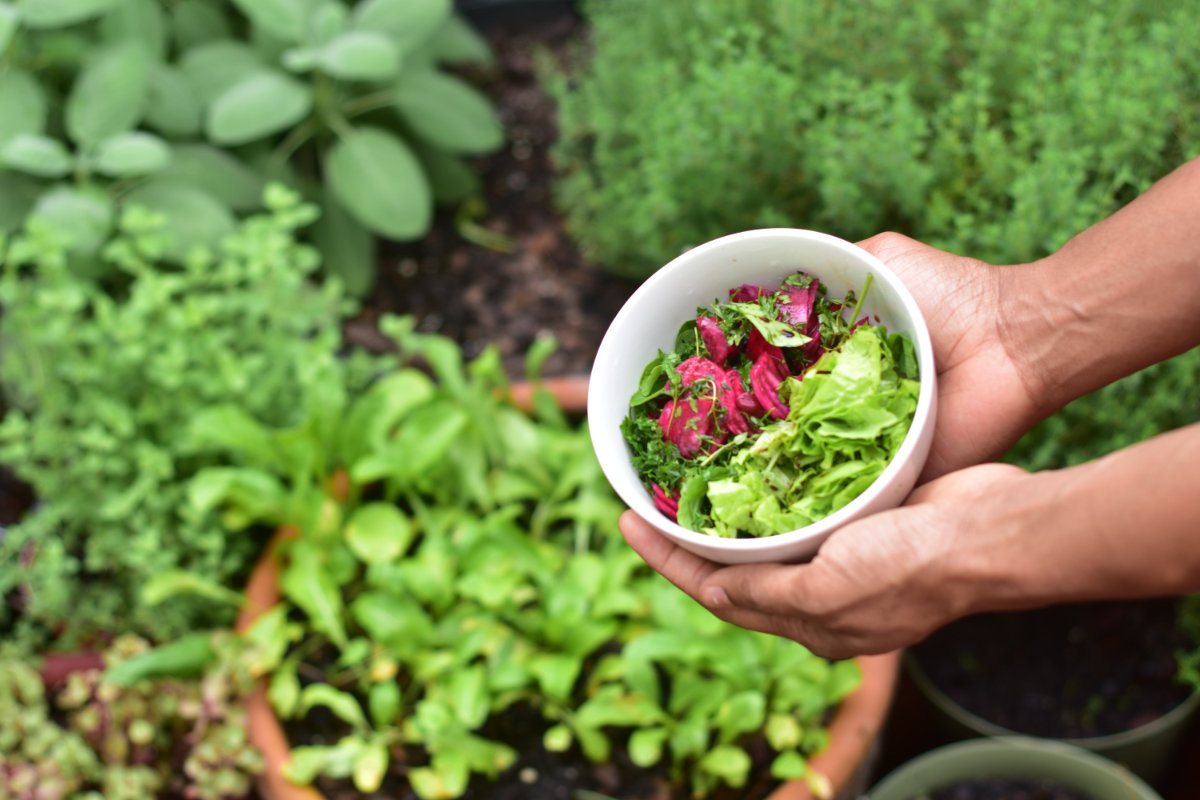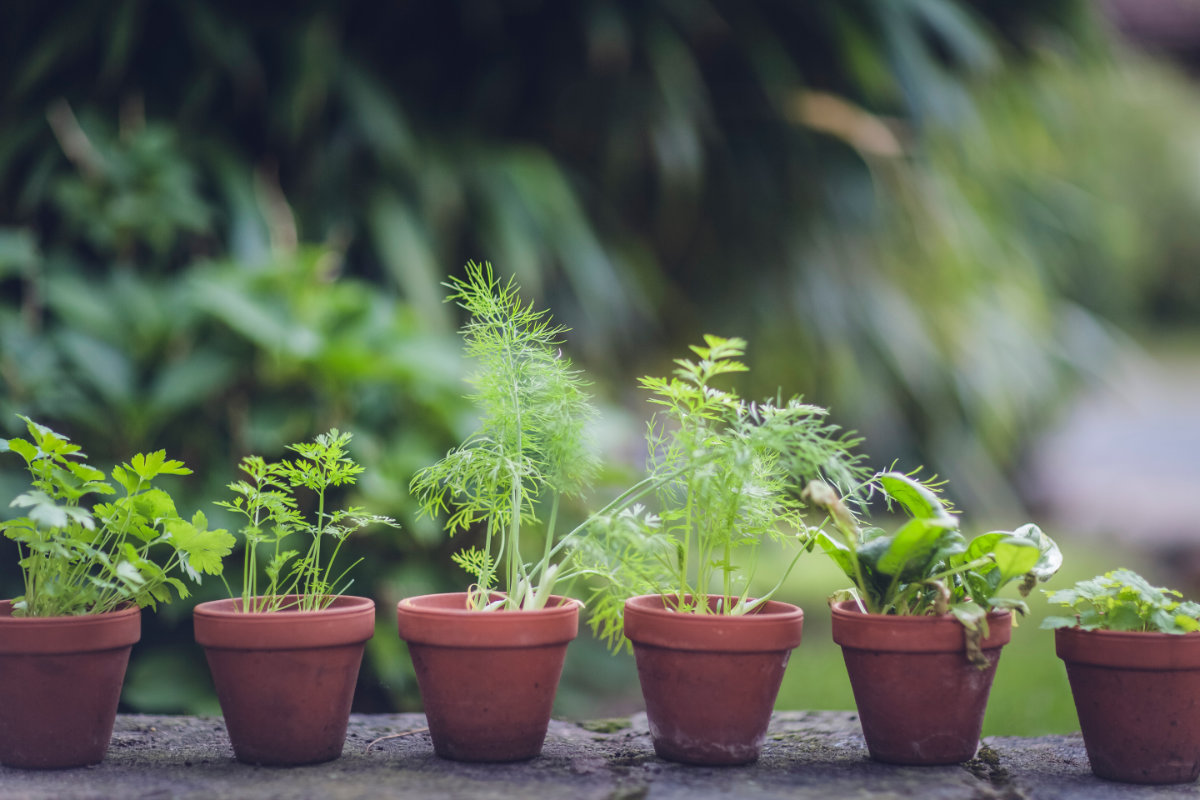How To: Grow Your Own Salad Already Mixed


Some folks’ favorite garden produce is “mesclun”, aka “baby greens”, “designer” or salad greens, and many feel that they are among the easiest plants to grow. They are also more and more often being grown together – which is what mesclun means – all mixed up ready for the salad. Mesclun may also be a good choice for space in the home garden because buying it in the stores is so expensive – reportedly as much as $16 per pound in some locations!
They can be planted in early spring, take only 3 to 5 weeks before harvesting can begin, and will continue to yield for many weeks. Most greens will grow at their best when temperatures are between 60 and 70 degrees Fahrenheit. They can also be grown almost anywhere, even in partial shade, and require little space to provide salad fixing’s for a family just about continually.
Most of us are familiar with iceberg, romaine, butter crunch, plus green and red oak leaf lettuce, but there are hundreds of other greens, including dandelion, mustard greens, spinach, endive, beet greens, parsley, and cresses from America, and radicchio, arugala, and mache from Europe, which can be mixed together to make an almost endless variety of salads from which we can choose.
You can mix your own preferred blend of salad green seeds, or buy them pre-mixed as mesclun from any one of several seed companies. They are usually mixed so that they mature at about the same time, and are also mixed to taste, with several different mild and zesty varieties.
Unless you plan to sell your harvest, you should only plant a small area at a time, so that you can use what you grow while it’s at its peak. Three to four feet in a soil-bed or Grow-Box will produce plenty of salad for most families.
Your mesclun will do well from early spring until July in most places, and you can plant again in August & September for a succession of fall greens. If you want to grow during the heat of the summer you should plan to provide some shade during the hottest part of the day, and pay special attention to keeping your soil moist at all times. Otherwise your greens will become bitter and bolt.
You can grow each variety separately, or if you find a mesclun mix that suits you (or create your own), you can grow and harvest them together. By growing in a Grow-Box, or other container that has some protection, you can enjoy your homegrown greens before other gardeners’ plants even show above ground. For protection against frost we recommend you cover your greens with simple mini-greenhouses using PVC pipe and 6 mil greenhouse plastic.
In a Grow-Box or container you can plant 4 rows of greens in an 18″ wide box. If you’re planting in the soil with raised, ridged beds you have only 12″ of actual planting area (the ridges take up 6″), and you will have difficulty weeding if you try planting more than 2 rows per bed.
Growing Greens In Five Easy Steps
-
Apply the Mittleider Pre-Plant and Weekly Feed mixes to the sawdust/sand soil mix, using 1 ounce and ½ ounce per lineal foot, and mix thoroughly with the soil. Water the soil well – preferably the day before planting. If possible, maintain soil temperature at 78-80 degrees.
-
If growing several varieties of greens together, mix the seeds first in a jar. For optimum germination moisten the seed and place in the refrigerator for 48 hours. Make a shallow furrow, sprinkle seeds at ½” to 1″ intervals in the furrow, then cover with 1/8″ of growing medium. Covering planted seeds with burlap is ideal, to avoid rolling the germinating seeds when watering. Sprinkle with water, wetting the soil gently but thoroughly.
-
Keep the seedbed evenly moist until seedlings emerge, which takes anywhere from four days to two weeks, depending on variety and soil temperature. Even after your seedlings emerge keep your box or bed watered daily to maintain moist – but not wet – conditions. Remember that soil moisture extremes encourage bolting and bitterness, and discourage the rapid growth that is a key to taste and texture in leafy crops.
-
As soon as the first seedlings emerge, remove the burlap, give your seedlings maximum sunlight, and if growing in a small area begin watering with the “constant feed” solution of 1 ounce Feed in 3 gallons of water. If watering a large area – with hose or PVC pipe – apply granular Weekly Feed to the soil between the plant rows using ½ ounce (1 Tbsp) per running foot. If feeding with granular Weekly Feed, apply weekly three times before the first harvest and twice between harvests thereafter.
-
Use sharp scissors or a sharp knife to harvest when your greens are 3 to 5 inches tall. Early morning is best, to avoid wilting. Cut at least 1 inch above the soil level, always leaving the growing tip intact. Gently wash and dry the leaves. Use your cut greens as soon as possible. If you must wait a few days before using, consider harvesting with the roots, to minimize wilting. To store, place in the refrigerator crisper using an airtight plastic bag. If manure or compost is used in your garden, or if others are involved in harvesting, wash your greens with hydrogen peroxide to avoid the possibility of food poisoning.
Some people today are being convinced they need to invest in hydroponic equipment, in order to successfully grow the salad greens they enjoy so much. This is because hydroponic methods include constant watering, ever-present nutrients, controlled temperatures, and no weeds – leading to the all-important uniform germination and maturity. However, growing hydroponically is very expensive, with lots of special equipment and materials to buy. And it is very labor intensive as well. Not to worry! The Mittleider Method’s “poor man’s hydroponic system” is the answer, and will give you near-hydroponic results without the expense or labor involved in hydroponics.
Growing your salad greens using the Mittleider Method gives you a big advantage over most other gardeners. You’ll practice daily watering (not every few minutes like hydroponics) to keep the soil moist, which is SO important to tender juicy greens. Also, regular feeding (weekly instead of constant) assures the fast, even growth essential for tasty and healthy produce. And growing in containers with a clean sawdust/sand mix, or eliminating all weeds in your soil-bed garden, lets all the water and nutrition go to your salad crop.
Enjoy your salad!


